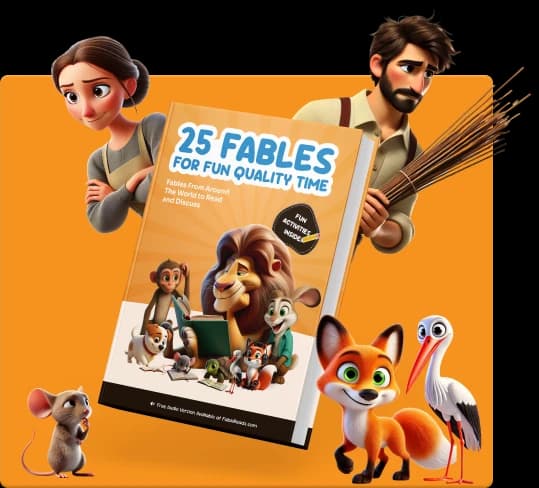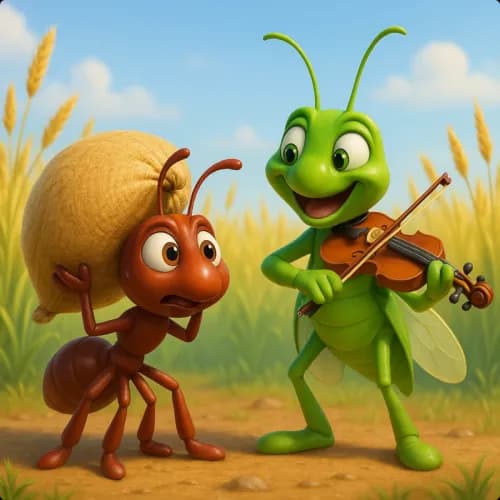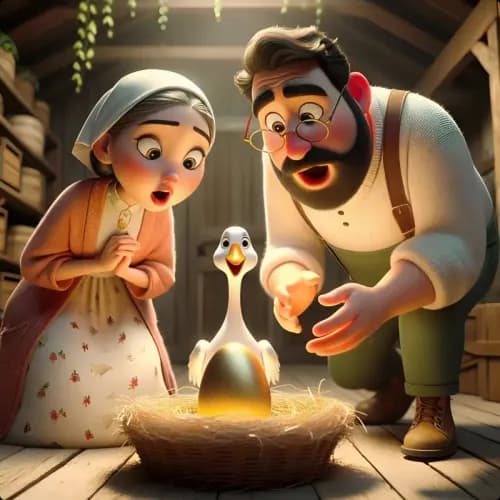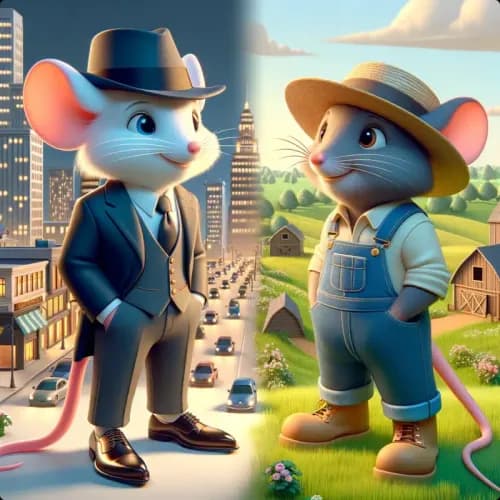Aesop | Greece
El Zorro y la Cigüeña
Un zorro astuto engaña a una cigüeña dándole un plato plano, pero ella se venga sirviendole al zorro comida en un jarrón, dejándolo hambriento.

Erase una vez en un bosque, donde vivía un zorro muy astuto. Un día, decidió jugarle una broma a su vecino, la cigüeña, y la invitó a cenar.
Cuando llegó la hora de la cena, el zorro sirvió la sopa en un plato plano. Mientras la cigüeña intentaba comer, el zorro se reía en silencio. El largo y delgado pico de la cigüeña no podía recoger ni una gota de sopa. Por más que lo intentara, la sopa se resbalaba de su pico.
Unos días después, la cigüeña invitó al zorro a cenar. Esta vez, la cigüeña sirvió la comida en un jarrón alto con una boca muy estrecha. Con su largo pico, la cigüeña pudo alcanzar fácilmente la deliciosa comida dentro del jarrón.
Pero el zorro tenía un problema. Su hocico corto y ancho no podía llegar hasta el fondo del jarrón. Intentó lamer y olfatear alrededor de la parte superior, pero no pudo alcanzar la comida.
Al final, la cigüeña disfrutó de su comida, mientras que el zorro se quedó con hambre. El zorro se dio cuenta de que su broma se le regreso de vuelta.
Compra un Libro y Ayuda a Llevar Fábulas al Mundo
Disfruta de 25 fábulas seleccionadas de por vida, impresas. Cada compra apoya historias gratuitas para niños, padres y maestros en todo el mundo en fablereads.com

















